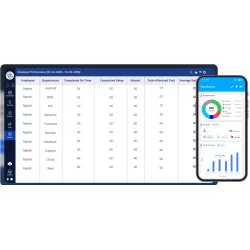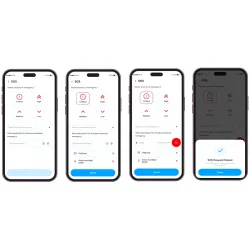Why Equipment Theft Prevention Matters
For industries like construction, agriculture, logistics, and equipment rental, preventing equipment loss and theft is not just a minor concern—it’s critical to operational success and financial stability.
Heavy machinery theft can result in millions of dollars in losses, project delays, higher insurance premiums, and reputational damage.
According to the National Equipment Register (NER), construction equipment theft in the U.S. alone accounts for $300 million to $1 billion in annual losses, making it one of the most costly issues facing asset-heavy industries today.
In this article, we’ll explore proven theft prevention strategies, the critical role GPS tracking plays, and how businesses can better protect their valuable assets.
The Growing Threat of Equipment Theft in Construction and Rentals
Construction sites, agricultural fields, and industrial yards are prime targets for criminals.
Popular targets include:
-
Excavators
-
Bulldozers
-
Loaders
-
Trailers
-
Generators
-
Cranes
Why is equipment theft so common?
Because heavy machinery often lacks clear registration numbers, can be moved easily, and is highly valuable on black markets.
Understanding the motives and tactics used by thieves is crucial for building an effective prevention strategy.
Organized crime groups, insider threats, and opportunistic criminals all pose serious risks.
Major Impacts of Equipment Theft on Your Business
Theft affects businesses in multiple damaging ways:
-
Financial Losses: Replacing stolen machinery can severely strain company budgets.
-
Project Delays: Loss of critical equipment halts construction schedules and leads to penalties.
-
Increased Insurance Costs: Repeated theft claims drive up insurance premiums and can reduce future insurability.
-
Reputational Damage: Delayed deliveries or incomplete projects can harm client relationships.
Without proactive theft prevention, companies risk significant financial and operational setbacks.
How to Assess Your Equipment Theft Risk
A strong theft prevention plan begins with a comprehensive risk assessment:
-
Evaluate Asset Type and Value: High-value machinery is a prime target.
-
Analyze Location Security: Remote or poorly secured sites are more vulnerable.
-
Audit Existing Measures: Gaps in fencing, lighting, or surveillance increase risk.
-
Review Historical Theft Data: Check local crime reports and industry statistics.
Identifying vulnerabilities helps companies develop targeted asset protection strategies.
Top Strategies for Effective Asset Theft Prevention
Protecting assets requires a multi-layered defense. Key strategies include:
1. Strengthen Physical Security
-
Install secure fencing and access control gates.
-
Use floodlights and surveillance cameras at worksites.
-
Deploy motion detectors and alarm systems.
2. Implement Employee Training and Awareness Programs
-
Educate teams on security protocols.
-
Encourage immediate reporting of suspicious activities.
-
Conduct regular security audits and refresher sessions.
3. Maintain Detailed Equipment Records
-
Record serial numbers, photographs, and purchase details.
-
Keep asset logs updated for faster recovery and insurance processing.
Tip: Use asset management software integrated with GPS tracking for seamless inventory tracking.
Enhancing Equipment Security with GPS Tracking
Modern theft prevention isn’t complete without GPS asset tracking.
Here’s why GPS tracking is critical:
-
Real-Time Location Monitoring: Track equipment 24/7 via mobile apps or desktop dashboards.
Explore GPS Asset Tracking Devices -
Geofencing Alerts: Set digital boundaries and receive instant alerts if an asset leaves the designated area.
Learn About Geofencing GPS Solutions -
Rapid Recovery Assistance: Share live GPS data with authorities to recover stolen equipment swiftly.
Businesses that implement GPS technology report up to 75% faster recovery rates compared to businesses relying on traditional security methods.
Choosing the Best GPS Tracker for Heavy Equipment
Not all GPS trackers are created equal. Choose a device that offers:
-
Long Battery Life: Look for trackers with up to 6–12 months of battery operation.
-
Durable, Waterproof Design: Essential for harsh construction and outdoor environments.
-
Mobile App Access and Alerts: Real-time monitoring and instant notifications.
-
Affordable Subscription Plans: Low monthly fees for sustainable asset protection.
-
Integration with Fleet Management Systems (FMS): Compatible with platforms like Zard, Wilon, and others.
Browse Our Top-Rated GPS Trackers for Construction Equipment
Steps to Take Immediately After Equipment Theft
If theft occurs, swift action is crucial:
-
Contact Law Enforcement: File a detailed report immediately.
-
Provide GPS Tracking Data: Share live location information with authorities.
-
Notify Insurance Providers: Begin the claims process promptly.
-
Strengthen Security: Review and upgrade security measures to prevent future incidents.
Conclusion: Secure Your Assets and Strengthen Your Operations
Equipment theft is a major threat to operational continuity and financial health.
By combining physical security, employee training, detailed inventory management, and advanced GPS tracking, businesses can drastically reduce theft risks and ensure business resilience.
Don’t wait until it's too late. Proactive protection today saves significant time, money, and stress tomorrow.
Frequently Asked Questions (FAQs)
1. Why is preventing equipment theft so important for businesses?
Equipment theft leads to costly financial losses, operational delays, higher insurance premiums, and damaged reputations. Preventing theft helps businesses protect their investments, maintain project timelines, and preserve profitability.
2. How does GPS tracking help in preventing equipment theft?
GPS tracking allows businesses to monitor the real-time location of equipment, receive instant alerts for unauthorized movements, and assist law enforcement in recovering stolen assets quickly.
Learn more about GPS tracking solutions here.
3. What are the most effective strategies to prevent equipment theft?
A comprehensive approach is best, combining:
-
Strong physical security (fencing, cameras, alarms)
-
GPS tracking systems
-
Employee awareness and training programs
-
Detailed inventory management
Explore top equipment theft prevention strategies.
4. How do I choose the best GPS tracker for heavy equipment?
When selecting a GPS tracker, consider:
-
Long battery life
-
Rugged, weather-resistant design
-
Real-time alerts and mobile monitoring
-
Geofencing capabilities
-
Compatibility with fleet management platforms like Zard, Wilon, or Tracksolid Pro
Browse GPS trackers designed for heavy equipment.
5. What steps should I take immediately if my equipment is stolen?
Act quickly:
-
Contact law enforcement with full equipment details.
-
Share GPS tracking data to aid recovery.
-
Notify your insurance provider.
-
Review and tighten security measures to prevent future theft.
6. Can employee training really reduce theft risks?
Absolutely.
Trained employees are more vigilant, follow better security practices, and act as an early warning system against theft. Security awareness significantly lowers overall risk across operations.
Related Articles
Explore more ways to protect and manage your valuable assets:
-
How GPS Tracking Boosts Fleet Efficiency and Reduces Costs
Discover how real-time tracking, route optimization, and smart reporting can transform your fleet operations. -
Zard W18L Wireless GPS Tracker: Full Review and Features
Learn more about the Zard W18L a top choice for rugged, long-lasting GPS tracking in construction and heavy industries. -
Installation Guide: How to Activate and Set Up Your Asset Tracker
Step-by-step instructions to quickly activate your GPS device and start monitoring your equipment in minutes.
Secure Your Assets Today
Looking for the best way to protect your valuable equipment?
Explore our range of advanced GPS tracking solutions — trusted by businesses across construction, logistics, and rental industries.


